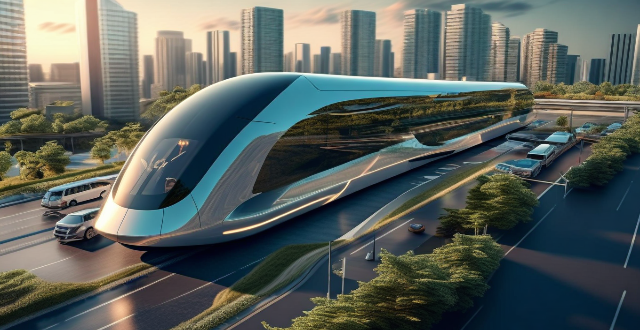The future of public transportation is likely to be shaped by autonomous vehicles and ride-sharing services. Autonomous vehicles offer safety, efficiency, and convenience benefits over traditional public transportation systems, while ride-sharing services provide accessibility, cost savings, and reduced environmental impact. However, challenges must be addressed before these technologies can fully replace traditional public transportation systems. Cities and transportation providers must carefully consider how best to integrate these new technologies into their existing infrastructure while ensuring that everyone has access to safe and reliable transportation options.

The Future of Public Transportation
As the world becomes more urbanized and cities become increasingly congested, the future of public transportation is a topic of great interest. With the rise of autonomous vehicles and ride-sharing services, it is likely that public transportation will undergo significant changes in the coming years. In this article, we will explore some of the potential impacts of these technologies on public transportation and what we can expect in the future.
Autonomous Vehicles
One of the most significant developments in recent years has been the emergence of autonomous vehicles. These vehicles are designed to operate without human intervention, using advanced sensors and algorithms to navigate roads and make decisions. While still in their early stages, autonomous vehicles have the potential to revolutionize public transportation by providing safer, more efficient, and more convenient options for commuters.
Safety
One of the primary benefits of autonomous vehicles is their potential to improve safety on our roads. According to the National Highway Traffic Safety Administration (NHTSA), over 94% of all car accidents are caused by human error. By removing humans from the driving equation, autonomous vehicles could significantly reduce the number of accidents and fatalities on our roads.
Efficiency
Autonomous vehicles also have the potential to improve efficiency in public transportation systems. By using real-time data and machine learning algorithms, these vehicles can optimize routes and schedules to minimize delays and maximize capacity. This could lead to shorter wait times for passengers and reduced congestion on our roads.
Convenience
Finally, autonomous vehicles offer a level of convenience that traditional public transportation systems cannot match. Passengers can request a ride at any time, from any location, and be taken directly to their destination without having to worry about transfers or crowded buses or trains. This could lead to increased usage of public transportation systems and reduced reliance on personal vehicles.
Ride-Sharing Services
Another trend that is likely to shape the future of public transportation is the rise of ride-sharing services like Uber and Lyft. These services allow passengers to request a ride from their smartphone and be picked up by a nearby driver within minutes. While still relatively new, ride-sharing services have already had a significant impact on how people get around in cities.
Accessibility
One of the key advantages of ride-sharing services is their accessibility. Unlike traditional public transportation systems, which may have limited hours or require passengers to travel to specific locations, ride-sharing services can pick up passengers anywhere within their service area at any time of day or night. This makes them an attractive option for people who need flexible transportation options.
Cost
Another advantage of ride-sharing services is their cost. While prices vary depending on location and demand, ride-sharing services often offer competitive rates compared to traditional taxi services or even public transportation systems. This makes them an affordable option for many people who may not otherwise have access to reliable transportation.
Environmental Impact
Finally, ride-sharing services also have the potential to reduce environmental impact by reducing the number of cars on our roads. By sharing rides with other passengers heading in the same direction, ride-sharing services can help reduce congestion and air pollution in our cities. However, concerns have been raised about the environmental impact of ride-sharing services due to the increased use of personal vehicles rather than public transportation systems.
Conclusion
In conclusion, the future of public transportation is likely to be shaped by the rise of autonomous vehicles and ride-sharing services. These technologies offer significant benefits in terms of safety, efficiency, convenience, accessibility, cost, and environmental impact. However, there are also challenges that must be addressed before these technologies can fully replace traditional public transportation systems. As we move forward into the future, it will be important for cities and transportation providers to carefully consider how best to integrate these new technologies into their existing infrastructure while ensuring that everyone has access to safe and reliable transportation options.